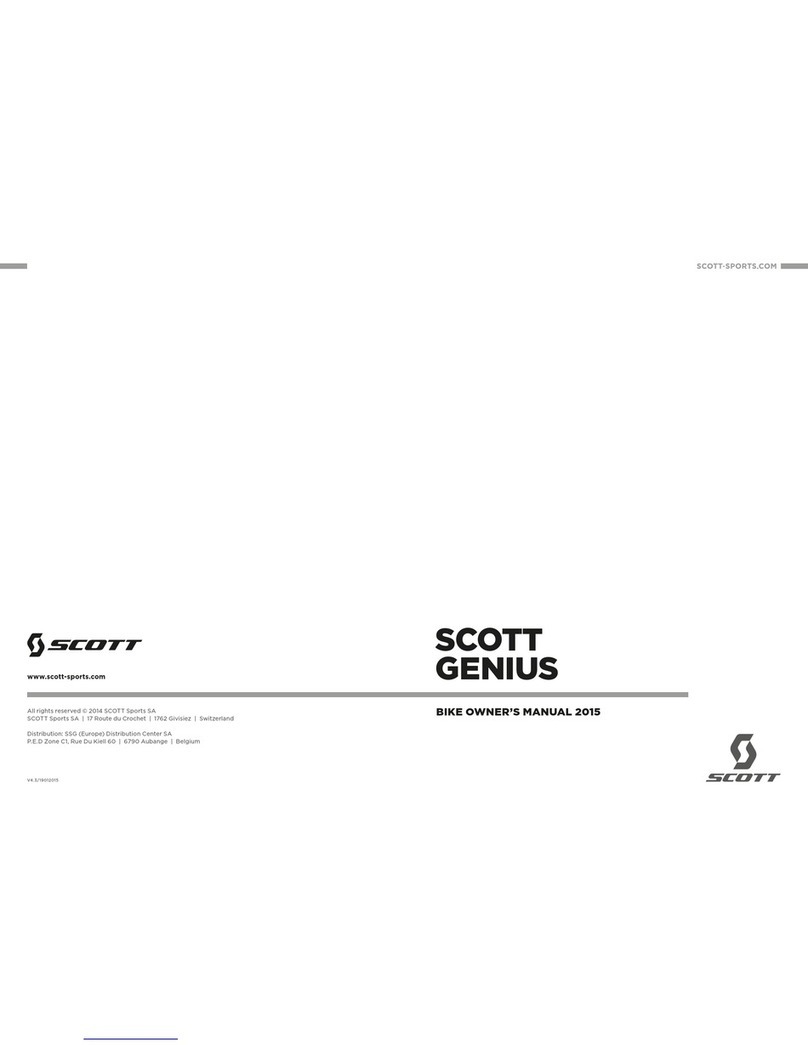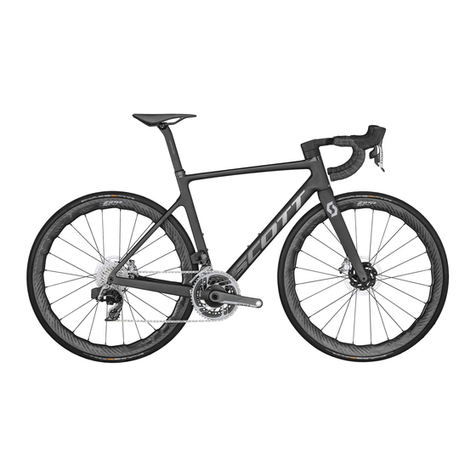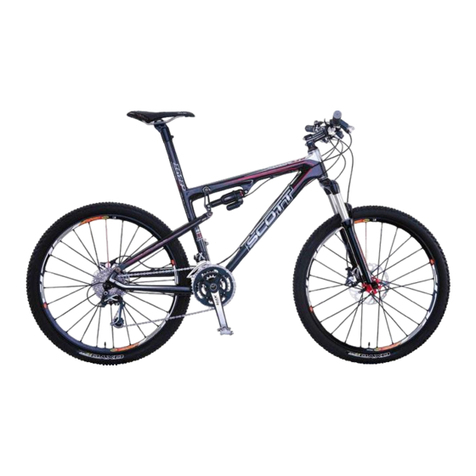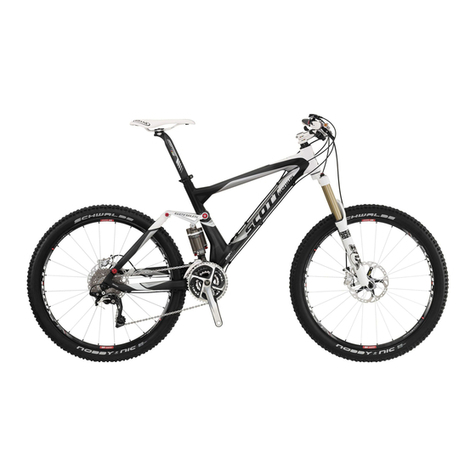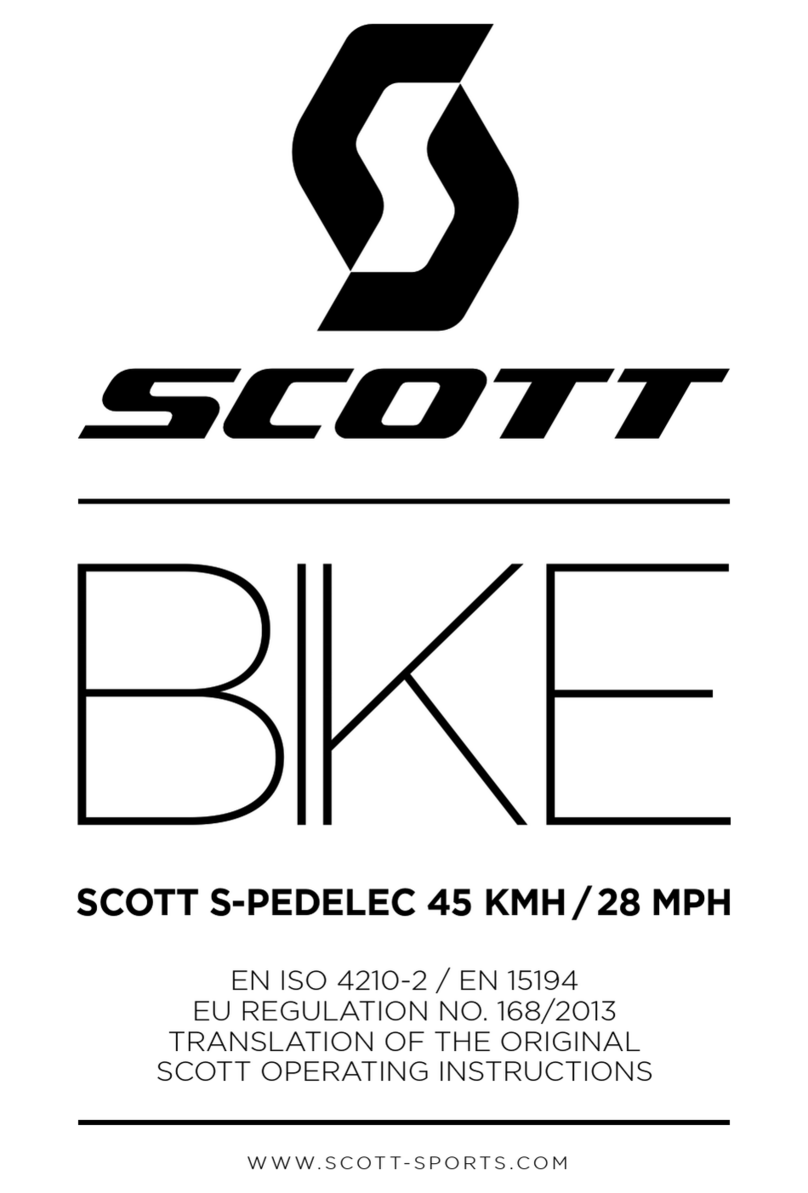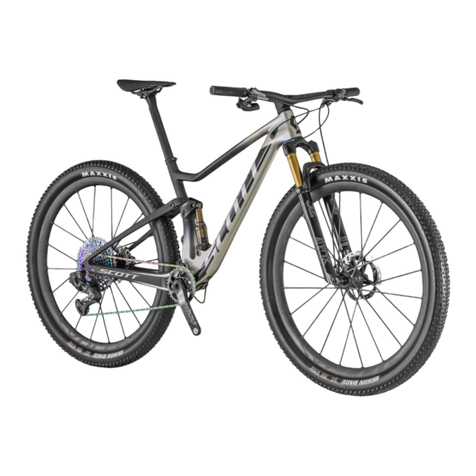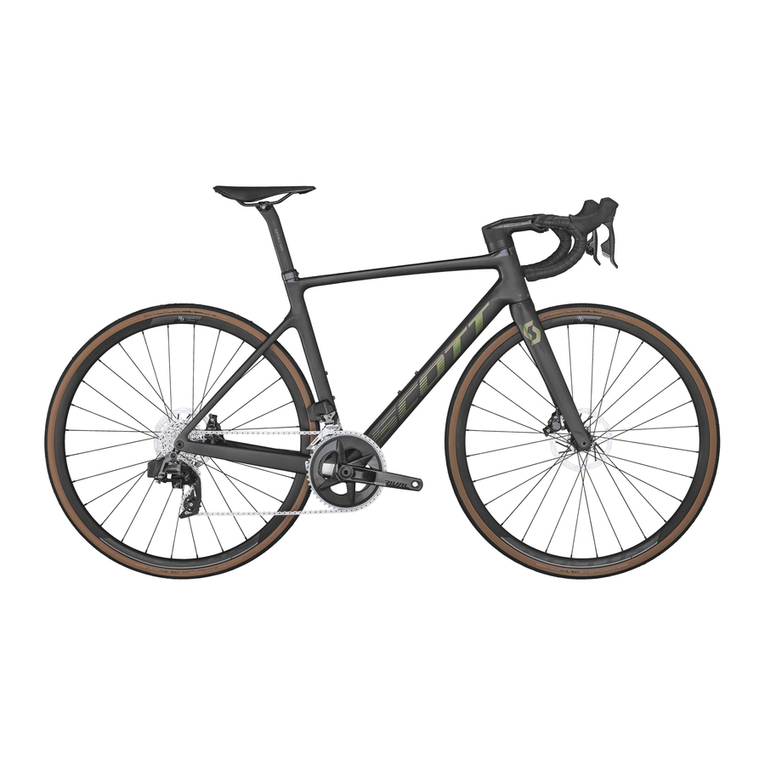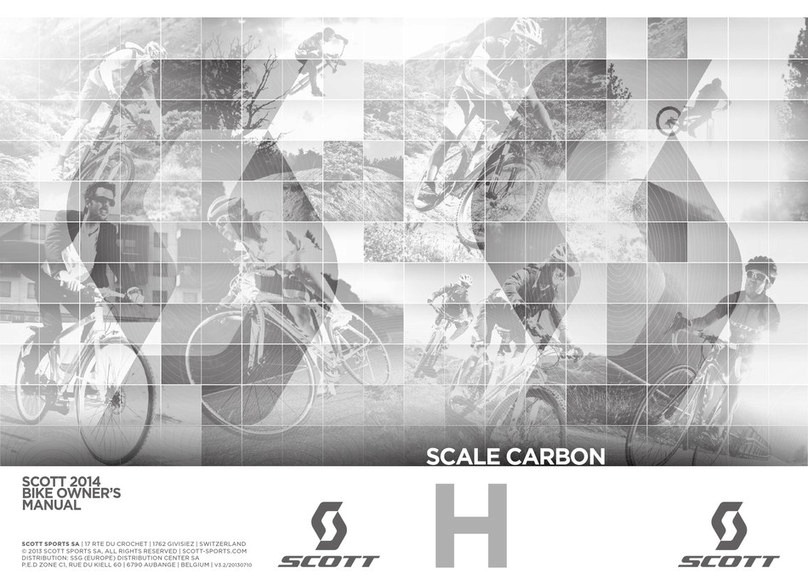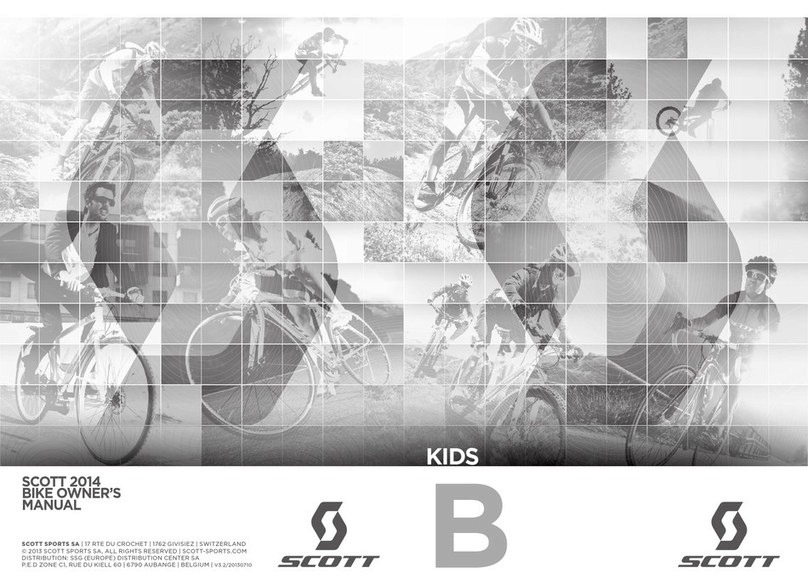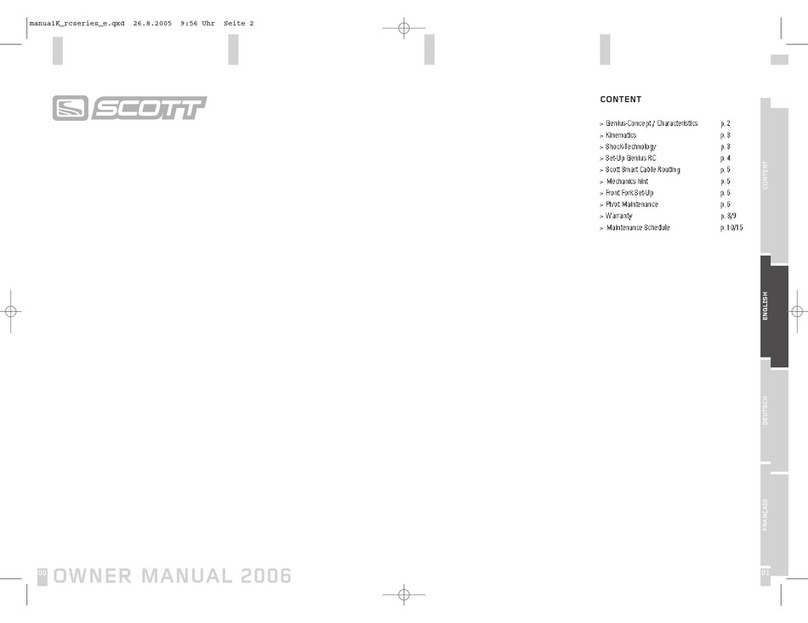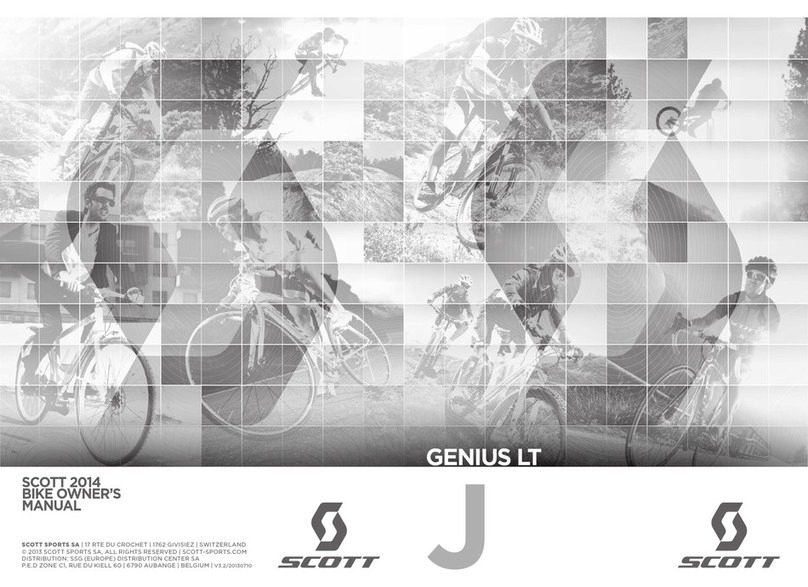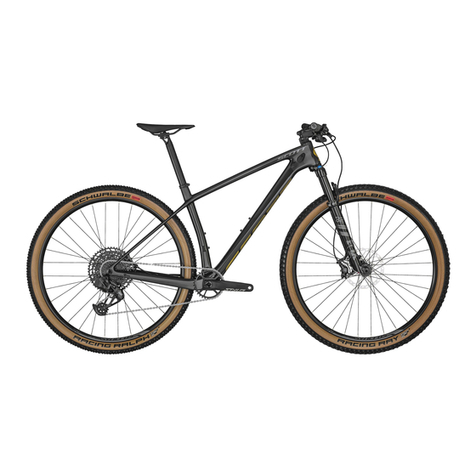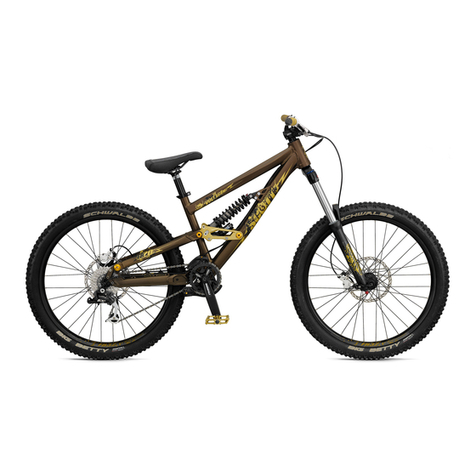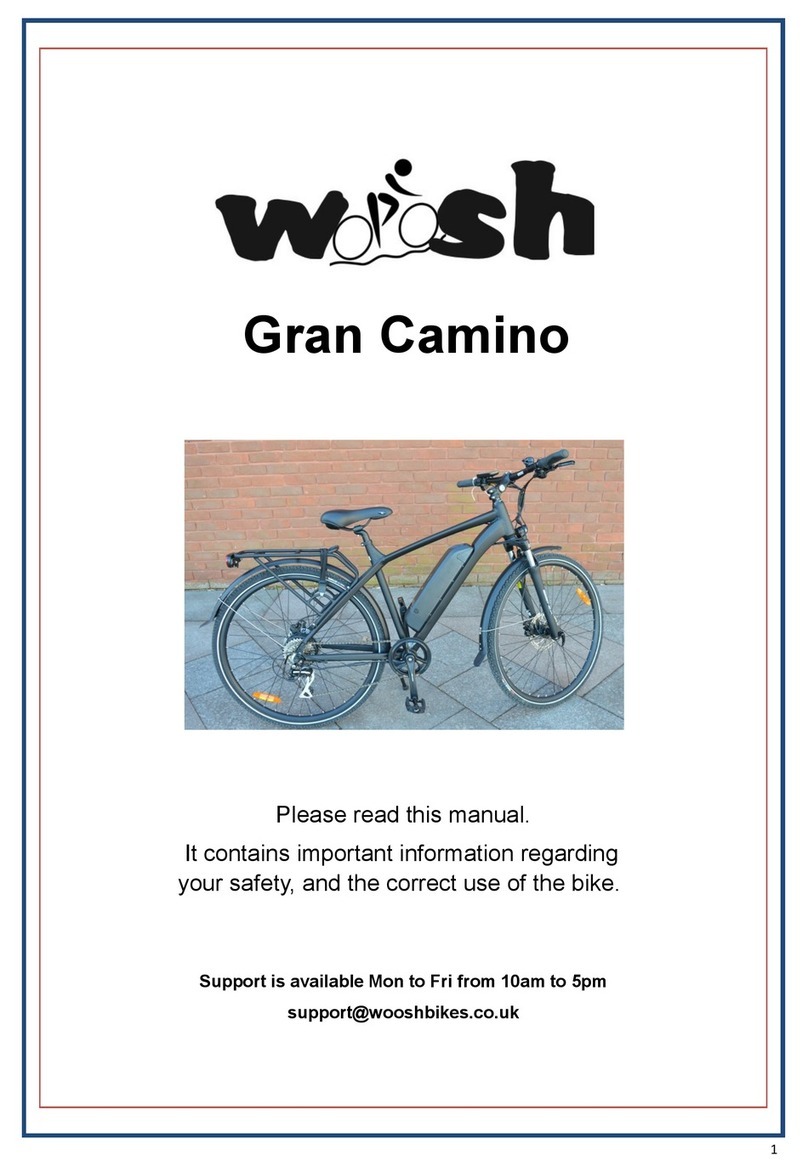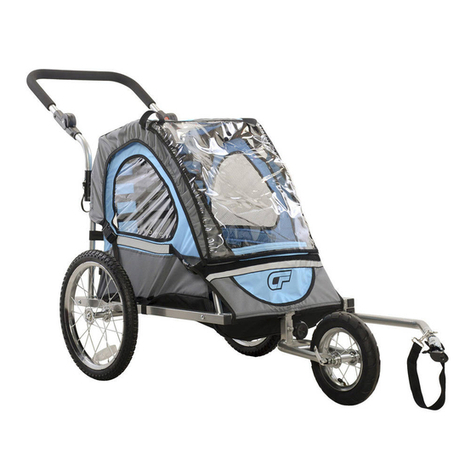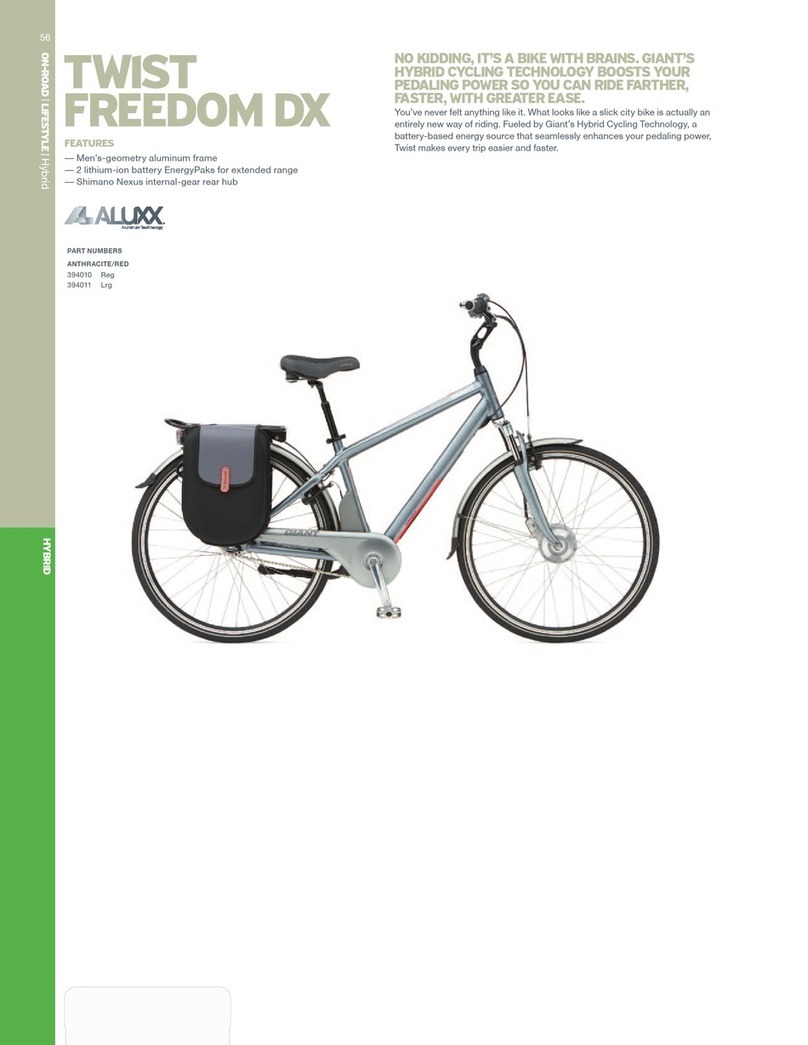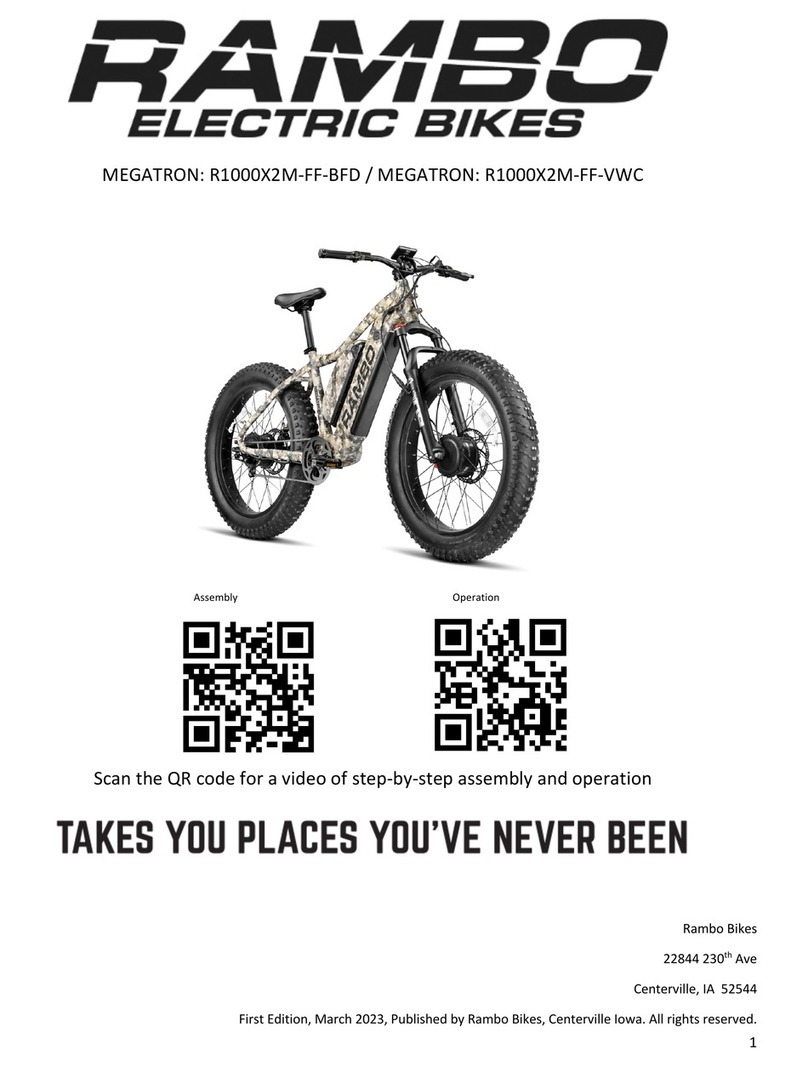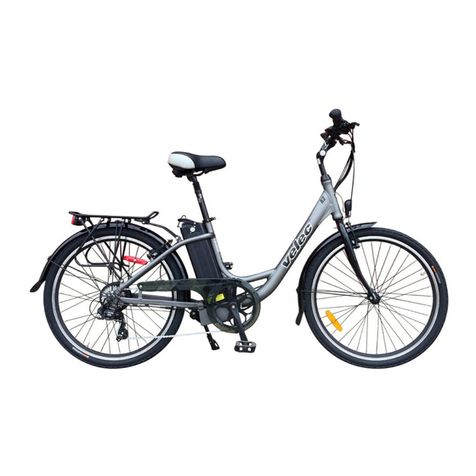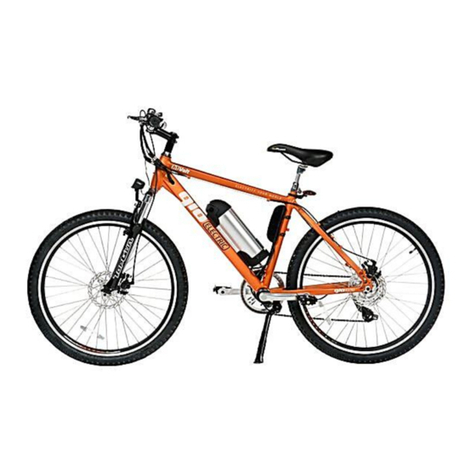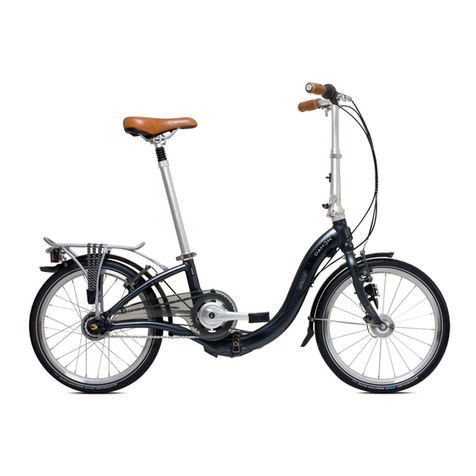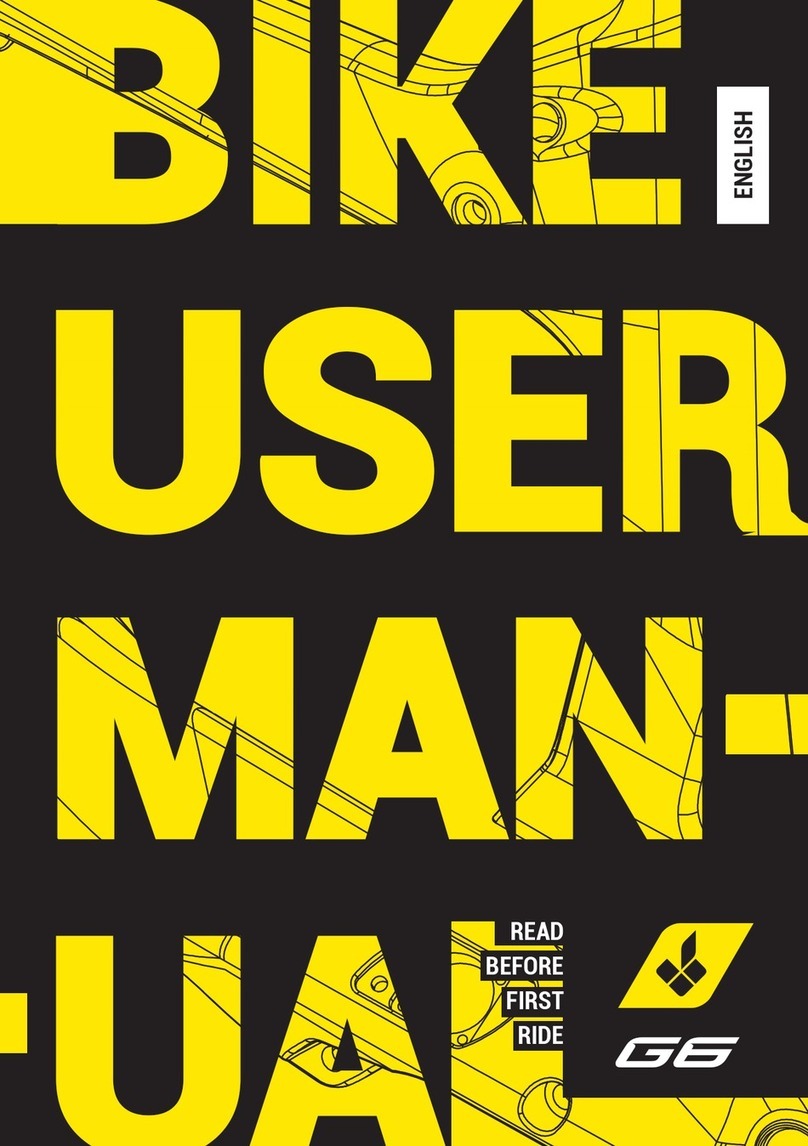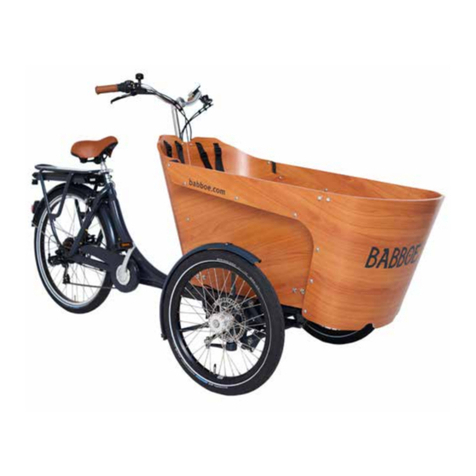
ENGLISHENGLISH 07 |
| 06 MOUNTAIN BIKE AND MOUNTAIN BIKE-PEDELEC | ORIGINAL OPERATING INSTRUCTIONS 2017ORIGINAL OPERATING INSTRUCTIONS 2017 | MOUNTAIN BIKE AND MOUNTAIN BIKE-PEDELEC
SUSPENSION ON SCOTT BIKES . . . . . . . . . . . . . . . . . . . . . . . . . . . . .66
Glossary . . . . . . . . . . . . . . . . . . . . . . . . . . . . . . . . . . . . . . . . . . . . 66
Front suspension . . . . . . . . . . . . . . . . . . . . . . . . . . . . . . . . . . . . . . .68
Adjusting the spring rate . . . . . . . . . . . . . . . . . . . . . . . . . . . . . . . . . . . 68
Setting the damping . . . . . . . . . . . . . . . . . . . . . . . . . . . . . . . . . . . . . 71
Lockout . . . . . . . . . . . . . . . . . . . . . . . . . . . . . . . . . . . . . . . . . . . . 73
Maintenance . . . . . . . . . . . . . . . . . . . . . . . . . . . . . . . . . . . . . . . . . .74
Rear suspension . . . . . . . . . . . . . . . . . . . . . . . . . . . . . . . . . . . . . . . 75
What to bear in mind when adjusting the seating position . . . . . . . . . . . . . . . . 76
Adjusting the spring rate . . . . . . . . . . . . . . . . . . . . . . . . . . . . . . . . . . . 76
Chassis adjustment . . . . . . . . . . . . . . . . . . . . . . . . . . . . . . . . . . . . . . 79
Setting the damping . . . . . . . . . . . . . . . . . . . . . . . . . . . . . . . . . . . . . 79
Lockout . . . . . . . . . . . . . . . . . . . . . . . . . . . . . . . . . . . . . . . . . . . . 82
Maintenance . . . . . . . . . . . . . . . . . . . . . . . . . . . . . . . . . . . . . . . . . .83
BRAKES . . . . . . . . . . . . . . . . . . . . . . . . . . . . . . . . . . . . . . . . . . . . .85
Rim brakes . . . . . . . . . . . . . . . . . . . . . . . . . . . . . . . . . . . . . . . . . . .87
V-Brakes and cantilever brakes . . . . . . . . . . . . . . . . . . . . . . . . . . . . . . . 87
Disc brakes. . . . . . . . . . . . . . . . . . . . . . . . . . . . . . . . . . . . . . . . . . .89
Hydraulic disc brakes . . . . . . . . . . . . . . . . . . . . . . . . . . . . . . . . . . . . . 91
Mechanical disc brakes . . . . . . . . . . . . . . . . . . . . . . . . . . . . . . . . . . . . 92
GEARS . . . . . . . . . . . . . . . . . . . . . . . . . . . . . . . . . . . . . . . . . . . . . .93
Derailleur gears. . . . . . . . . . . . . . . . . . . . . . . . . . . . . . . . . . . . . . . .93
Operation and control . . . . . . . . . . . . . . . . . . . . . . . . . . . . . . . . . . . .94
Checking and readjusting . . . . . . . . . . . . . . . . . . . . . . . . . . . . . . . . . . 97
Adjusting the rear derailleur . . . . . . . . . . . . . . . . . . . . . . . . . . . . . . . . . 97
Adjusting the front derailleur. . . . . . . . . . . . . . . . . . . . . . . . . . . . . . . . .99
BICYCLE CHAIN. . . . . . . . . . . . . . . . . . . . . . . . . . . . . . . . . . . . . . . .101
Chain maintenance . . . . . . . . . . . . . . . . . . . . . . . . . . . . . . . . . . . . 102
WHEELS AND TYRES. . . . . . . . . . . . . . . . . . . . . . . . . . . . . . . . . . . 103
Notes on tyres, inner tubes, rim tape, inflation pressure . . . . . . . . . . . . . 104
Valves . . . . . . . . . . . . . . . . . . . . . . . . . . . . . . . . . . . . . . . . . . . . . 106
Rim trueness and spoke tension . . . . . . . . . . . . . . . . . . . . . . . . . . . . 107
TABLE OF CONTENTS
SOME NOTES ON THE TRANSLATION OF THESE
ORIGINAL SCOTT OPERATING INSTRUCTIONS . . . . . . . . . . . . . . . . . . 10
SAFETY AND BEHAVIOUR . . . . . . . . . . . . . . . . . . . . . . . . . . . . . . . . 13
INTENDED USE OF YOUR SCOTT BIKE . . . . . . . . . . . . . . . . . . . . . . . . 17
TESTS BEFORE YOUR FIRST RIDE . . . . . . . . . . . . . . . . . . . . . . . . . . . 25
Additional information “Tests before your first ride”
with your SCOTT pedelec . . . . . . . . . . . . . . . . . . . . . . . . . . . . . . . . . 28
TESTS BEFORE EVERY RIDE . . . . . . . . . . . . . . . . . . . . . . . . . . . . . . . 31
Additional information “Tests before every ride”
with your SCOTT pedelec . . . . . . . . . . . . . . . . . . . . . . . . . . . . . . . . . 33
USING QUICK-RELEASES AND THRU AXLES. . . . . . . . . . . . . . . . . . . .35
Quick-releases on the SCOTT bike . . . . . . . . . . . . . . . . . . . . . . . . . . . .35
Safe fastening of a component with a quick-release . . . . . . . . . . . . . . . . . . . .35
DT Swiss RWS quick-release system . . . . . . . . . . . . . . . . . . . . . . . . . . . . 37
Thru axles on the SCOTT bike . . . . . . . . . . . . . . . . . . . . . . . . . . . . . . .39
RWS system from DT Swiss . . . . . . . . . . . . . . . . . . . . . . . . . . . . . . . . .40
Maxle for RockShox RS-1 . . . . . . . . . . . . . . . . . . . . . . . . . . . . . . . . . . . 42
Bolted thru axle (eccentric). . . . . . . . . . . . . . . . . . . . . . . . . . . . . . . . . .43
Fox E-Thru 15 QR . . . . . . . . . . . . . . . . . . . . . . . . . . . . . . . . . . . . . . .44
ADJUSTING THE SCOTT BIKE TO THE RIDER . . . . . . . . . . . . . . . . . . .46
Adjustment of the saddle to the correct height. . . . . . . . . . . . . . . . . . . .47
Adjustment of the height of the handlebars . . . . . . . . . . . . . . . . . . . . . .49
Stems for threadless systems – Aheadset® . . . . . . . . . . . . . . . . . . . . . . . . . 51
What to bear in mind with SCOTT bikes with carbon steerer . . . . . . . . . . . . . . . 53
Saddle adjustment – fore-to-aft position and horizontal tilt . . . . . . . . . . . . . . . .55
Adjustment of saddle position and tilt. . . . . . . . . . . . . . . . . . . . . . . . . . . .56
Cockpit adjustment . . . . . . . . . . . . . . . . . . . . . . . . . . . . . . . . . . . . . 59
Brake lever reach adjustment on SCOTT mountain bikes . . . . . . . . . . . . . . . . . 59
Adjustment of handlebar tilt and brake levers on SCOTT mountain bikes . . . . . . . .60
Bar ends . . . . . . . . . . . . . . . . . . . . . . . . . . . . . . . . . . . . . . . . . . . . 62
SCOTT DIRT AND FREERIDE BIKES . . . . . . . . . . . . . . . . . . . . . . . . . . 63
Adjustment of the saddle height. . . . . . . . . . . . . . . . . . . . . . . . . . . . . . .64
